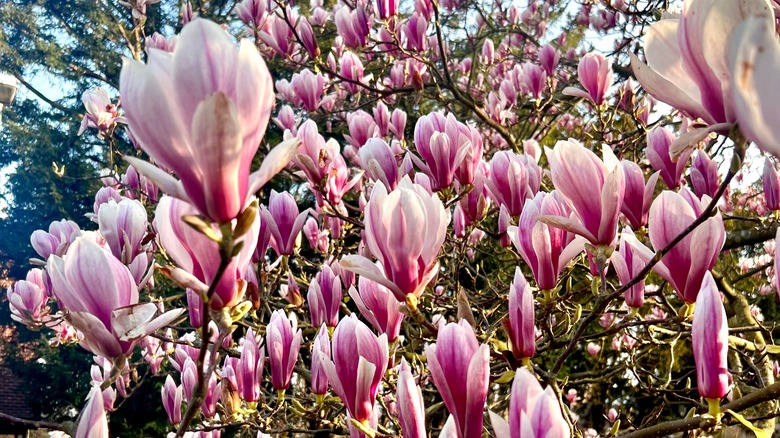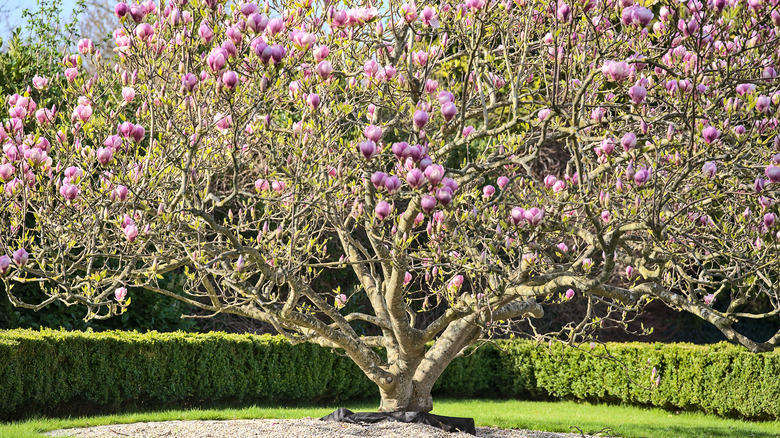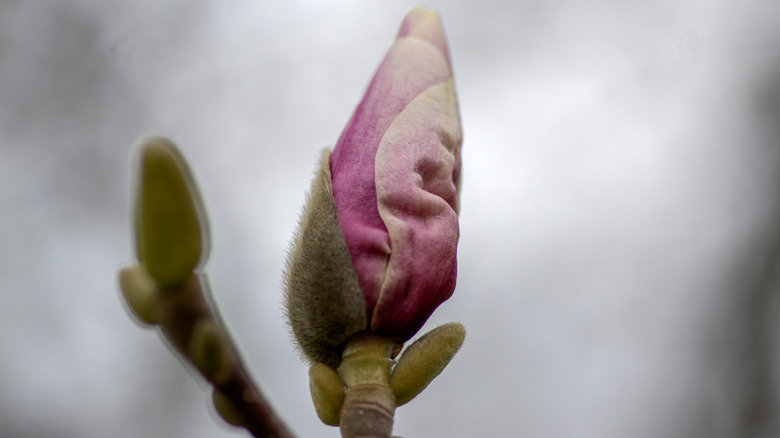The Pink And Purple Magnolia Tree Variety You'll Want To Plant For Beautiful Blooms
Does your landscaping appear a bit monochrome? If your yard is looking overly green, and you feel like it needs some more visual interest, it's time to consider planting flowering trees. These trees will break up the monotonous line of greenery you have lining your yard and add a dose of romance to your design. However, since there are hundreds of options to choose from, it might feel a bit overwhelming to narrow down your choices. One great option to start with is the saucer magnolia, which grows beautiful pink and purple blooms, depending on the variety you choose.
You can plant these trees relatively close to your house without worrying about the roots damaging the foundation or patio structure. However, keep in mind their canopies can grow up to 20 to 30 feet across, so give their branches plenty of room to spread out. You also don't have to wait very long to experience their blooms after planting them. Saplings as short as 5 feet tall will release buds, giving you a pop of color before you know it. Here is everything you need to know about the saucer magnolia.
What to know about the saucer magnolia
The saucer magnolia is an exciting addition to your landscaping design because it's usually one of the first plants to bloom in the spring, heralding the end of winter and the beginning of brighter days ahead. Specifically, it begins to bloom around the end of February or the beginning of March, offering a pop of color while the rest of the yard is dormant. It can grow up to 30 feet tall, making it a medium-sized tree. It thrives best in acidic and loamy soil and needs constant moisture in order to grow to its fullest potential. It also enjoys full sun, so make sure not to stick it in a shadowy backyard.
If all of its growing requirements are met, you will be rewarded each spring with show-stopping, cup-shaped flowers that resemble tulips. They can bloom as big as 10 inches wide, making quite the statement in your landscaping. Once the blooms fall, the leaves emerge, which are dark green and leathery to the touch. However, they will add a touch of color during the fall, since they turn an attractive copper color when the temperatures plummet.
Look out for your saucer magnolia in the cold
While it's a beautiful flowering tree that will bring romance to your yard, the saucer magnolia can be a bit finicky. Because of this, there are some things you should look out for to ensure you get those spectacular blooms each spring. First and foremost, you have to protect it from the spring frosts. While the buds can tolerate temps as low as -20 degrees Fahrenheit, the opened flowers can't. If an unexpected frost rolls through and plummets temps below 30 degrees Fahrenheit, the blooms will look dewy at first, but then will quickly turn brown and fall off.
If you have a fully matured tree that is 20 or 30 feet tall, there isn't much you can do to protect the blooms. However, if you have a smaller tree, you can cover it with a tarp to protect it from an upcoming cold snap. If you live in an area that has yo-yo-ing weather temps during the beginning of spring, it would be best to skip the saucer version and instead choose a magnolia tree variety that is easier to care for and blooms later in the spring, when temperatures are more stable. Such an example is the Magnolia x Blushing Belle, which has pale pink flowers that bloom in late spring. You can also try Magnolia x Marillyn, which has bright pink to dark red blooms that flower in April.


